Celebrating Georgetown and Washington, D.C. Centennials
By • September 14, 2022 0 5462
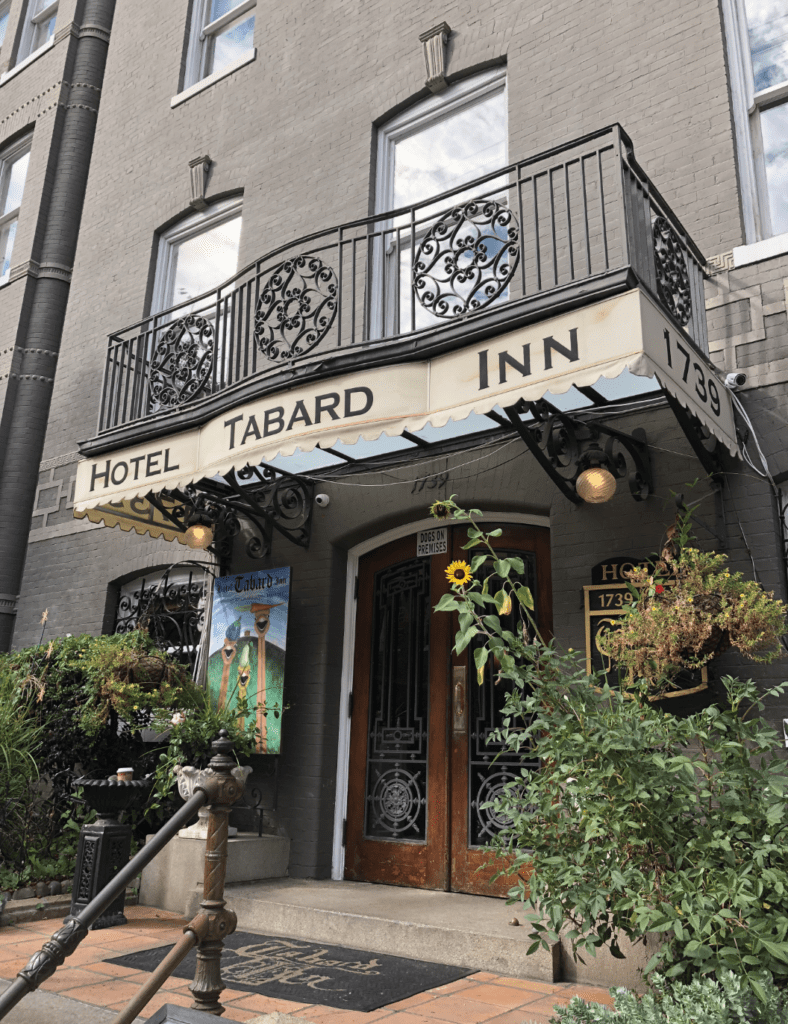
What Was It Like 100 Years Ago?
As we commemorate major centennials, why not travel by Time Machine back 100 years?
In 1922 – only four years since the end of The Great War — Georgetown was lurching toward postwar economic recovery and technological transformations, much as the nation at-large. But many prewar ways of life were only shifting gradually.
While the Jazz Age, the Roaring Twenties, the Prohibition Era and the Great Age of Radio were accelerating toward full “swing” – though the Charleston was the dance craze in 1922 – and women were celebrating only their second year of voting rights after the 19th Amendment, President Harding, who gave the first speech over the radio in the White House that year, was already embroiled in the Teapot Dome Scandal despite his pledge of a “return to normalcy.” The “Spanish Flu” was still sweeping the nation felling 500,000 Americans in the previous two years. And Jim Crow racial segregation continued to be the law of most of the land.
The postwar industrial boom, women in the workforce, the rising American stock market, the capital flow from European bank loans, and a new sense of geographical mobility were reshaping American life.
The U.S. had become the richest country in the world per capita. New industries were popping up all around – automobiles, telephones, films, radio, electrical appliances, aviation, mass-market advertising, insurance, and sports in the age of big stadiums and “ballyhoo.” In 1922, the first airplane landed in the U.S. Capital.
In the 1920s, more than half of American drivers owned a black Model T Ford or a “Tin Lizzie.” With the Age of the Automobile, a raft of new car support industries – from gas and service stations, to road and bridge construction, to parts manufacturers, to roadside diners and tourist destinations – sprang up to boost local economies nationwide. A new sense of freedom, especially for women, youth, the rising middle class, and previously isolated farmers, abounded.
In an age of postwar disillusionment where the general public was beginning to absorb the relativistic thought of Darwin, Nietzsche, Einstein, and Freud, the traditionalist mores of the Victorian Era were giving way to the era of “anything goes,” flappers, bootleggers, speakeasies and youth culture. The Lost Generation in Paris embodied the zeitgeist. In 1922, F. Scott Fitzgerald penned his Jazz Age masterpiece “The Beautiful and the Damned.” Towers of modern literature were also published that year including James Joyce’s “Ulysses,” T.S. Eliot’s “The Wasteland,” and Sinclair Lewis’s “Babbit.”
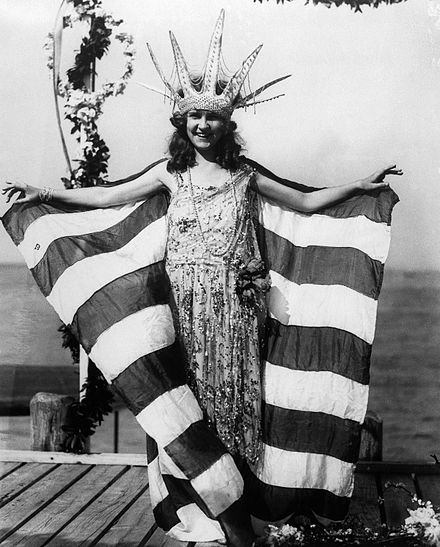
Margaret Gorman, 16, of Georgetown (she attended Western High School) was the first person to be crowned “Miss America” in 1921. Wikipedia.
Silent pictures began to shift to color in 1922 with the first all-color feature “The Toll of the Sea.” Cheap Movie Palaces sprang up in nearly every American town. In the winter of 1922, the roof of the Knickerbocker Theatre in Adams Morgan collapsed under the weight of a two-day blizzard killing 98 patrons and injuring 133 – the worst theater disaster in Washington history.
But for Georgetown, the 1920s marked a lower economic point than would the Depression decade of the 1930s. Industrialization and urbanization had created significant challenges. The waterfront was a bleak and insalubrious stretch of smokestacks and factories. Alley dwellings were unregulated, overcrowded and often unsafe. Housing on the eastern side of Georgetown was poor and poorly maintained. The Francis Scott Key Bridge would not be completed until 1923. With the Potomac River silted up at Georgetown, the C&O Canal would close the year after.
Despite segregation, Georgetown was quite racially diverse in 1922, with African-Americans approaching 30 percent of its population. Black Georgetowners established a community that included a variety of clubs, sports teams and Black-owned businesses.
New women’s clubs abounded in Washington around the time of the 19th Amendment (1920). The National Woman’s Party had been formed in the city in 1916 by Alice Paul and Lucy Burns. Carrie Chapman Catt founded the League of Women Voters here in 1920, and in 1922 the Women’s National Democratic Club was launched by Emily Newell Blair and Daisy Harriman.
A glance at the ubiquitous Sears Roebuck & Co. Catalogue of 1922 indicates that women’s fashion was only gradually moving away from Victorian era strictures even if a nod to the “new woman” of the Twenties was acknowledged. Under “Women’s Corsets,” women who desired both freedom of movement and old-fashioned corseting were pitched: “A good long lacer is furnished with each corset. Note the magnified illustration: see how it bends. It affords perfect freedom, combined with good support… Priced at $2.98.”
In another transition between the ages, Alexander Graham Bell, the inventor of the telephone in 1876, both lived and died in Georgetown in the year 1922.
Celebrating Centennials in D.C.
If a specific place, school, business or group can hit the centennial mark, it’s an achievement in our all-too-quick and human world. Still, Georgetown boasts quite a few. It’s worth noting that W.T. Weaver & Sons, one of the country’s oldest decorative bath and hardware firms, has gone far beyond that mark. Owned by Bryce Weaver and Michael Weaver, it’s a fourth-generation, family-owned business that’s been serving the needs of its Georgetown and Washington clients since 1889.
Herewith, a selection of others who mark a centennial in 2022 (or come close):
The Tabard Inn, 1922
A ménage à trois of brick townhouses on the 1700 block of N Street NW, the Tabard Inn is marking 100 years since its launch in 1922 as a small hotel and tea room. Founder Marie Willoughby Rogers chose the name Tabard Inn to evoke the hostelry in Chaucer’s “Canterbury Tales.” The Queen Anne-style buildings to either side of Italian Renaissance-style 1739 N St. NW were incorporated in the years that followed, creating a charmingly quirky interior of staircases, passageways and odd-sized rooms. During World War II, the Tabard provided officers’ quarters for the WAVES, the women’s branch of the U.S. Naval Reserve. After Rogers died in 1970, Fritzi and Edward Cohen — a public-interest lawyer and Capitol Hill staffer, respectively — rescued the Tabard from proposed demolition, reopening it in 1974. Three years later, the inn’s restaurant was reborn under Margee Wright and Nora Pouillon (Pouillon proceeded to pioneer organic cuisine at Restaurant Nora nearby). The oldest hotel in the District continuously owned and operated by women, the Tabard Inn was added to the D.C. Inventory of Historic Sites and the National Register of Historic Places in 2020.
Lincoln Memorial, 1922
Inspired by the Parthenon, the memorial centers on a statue of the seated 16th president of the United States, Abraham Lincoln. Inscriptions on the interior walls feature his Gettysburg Address and Second Inaugural Address. Nearby murals depict the reunification of the United States after the Civil War as well as the emancipation of more than 4,000,000 enslaved persons. The sculpture is by Daniel Chester French; the building by Henry Bacon. The National Mall would be impossible without this symbolically powerful structure: Think of Marian Anderson in 1939, Rev. Martin Luther King, Jr., in 1963, protestors against the Vietnam War, and so many other demonstrations since.
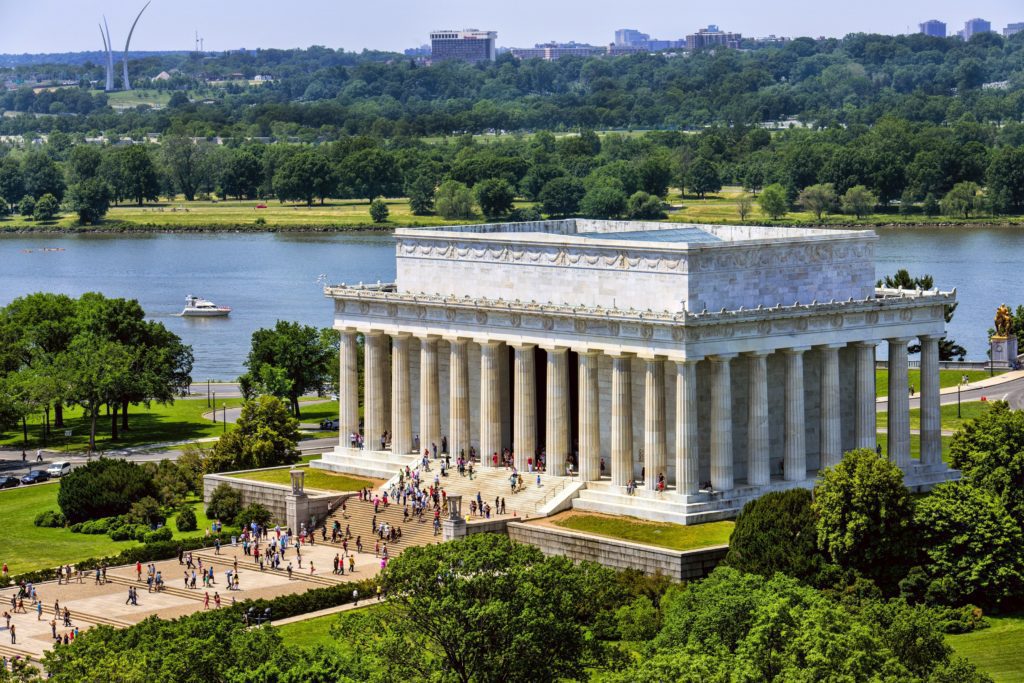
The Lincoln Memorial, completed in 1922. Twitter photo.
School of Foreign Service, Georgetown University, 1919
The Edmund A. Walsh School of Foreign Service graduated its first students in 1921 and is the oldest continuously operating school for international affairs in the United States. The school was first headed by Father Walsh, a staunch anti-communist, who was involved in Russian famine relief in 1922 as well as church relations in Mexico and the Nurenberg Trials. Its notable alumni include Bill Clinton, King Abdullah of Jordan, King Felipe VI of Spain, George Tenet, Denis McDonough, Mick Mulvaney, Steven Bannon and Carl Reiner. Its famous professors include Jan Karski, Carroll Quigley and Madeleine Albright.

The campus of Georgetown University. Twitter photo.
Georgetown Hairstyling, 1913
When Vanussa Mendes purchased Georgetown Hairstyling, the beyond century-old barber shop business on 35th Street, in 2015, she knew she was also buying into local history. “It will be operated in the same way as before for our clients,” Mendes said of the men’s haircut spot. A favorite of Georgetown residents and students for decades — with the names of past barbers Rigo Landa and Ed Lara in their stories — the place is a classic. Today, most of the staffers are women, including Veronica Corado, who cuts men’s hair only.
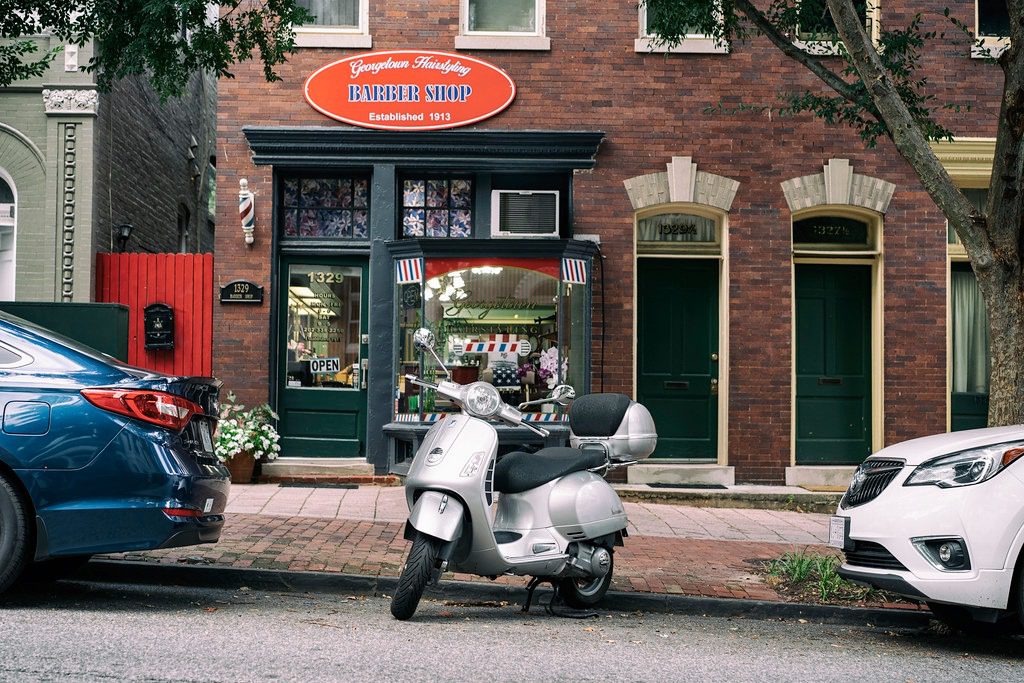
Georgetown Hair Styling. Facebook photo.
Morgan’s Pharmacy, 1912
This spring, Morgan Care Pharmacy, the 110-year-old business at the corner of 30th and P Streets NW, got a new owner — 33-year-old Sahar Kassem, who earned her doctorate of pharmacology at Howard University. Customers recall pharmacists Barry Deutschman and Dr. Mike Kim. “We treat people like family at Morgan’s,” Kassem said. “That’s what people love about this place. It feels familiar to them.” She told The Georgetowner that the details that make Morgan’s the “gem” that it is — such as Maurice Brown, attentive staffer at the register, who has been greeting customers with a smile for more than a decade — are not going anywhere.
Woman’s National Democratic Club, 1922
The large staircase lobby of the historic mansion on the corner of New Hampshire Ave. and Q St. NW is filled with ten immense framed collages. Created by WNDC members, each portrays a decade in the life of the club, founded in 1922 after the passage of the 19th Amendment that gave women the right to vote. For 100 years the WNDC has held biweekly meetings on current events, supported women candidates and hosted almost every Democratic president. Eleanor Roosevelt was an active member; her granddaughter was just recently president. At their Diamond Jubilee, Nancy Pelosi proclaimed “The WNDC is the heart of the Democratic Party.”
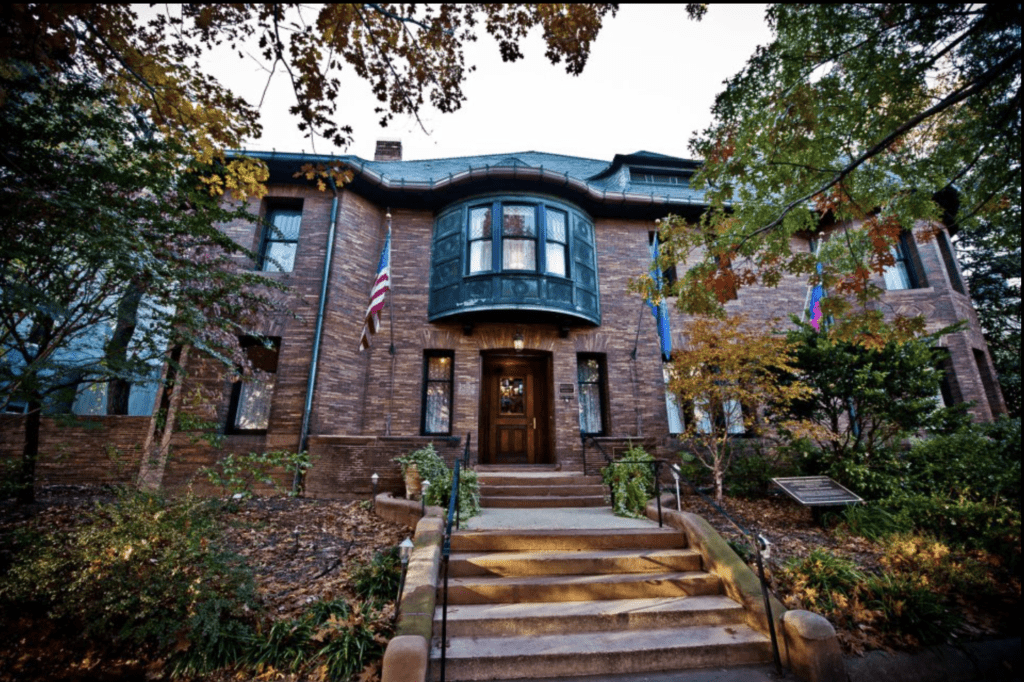
Woman’s National Democratic Club. Twitter photo.
Rose Park, 1922
Rose Park in Georgetown between P St. and M St. NW bordering the Rock Creek parkway was acquired by the District in the summer of 1922 from the Ancient Order of the Sons and Daughters of Moses that had developed it to serve African American children, The segregation rules of the time, however, were ignored by racially integrated Georgetown residents. The park hosts baseball teams (the Rose Park Warriors were famous), summer camps, family picnics, two playgrounds, holiday events, a farmers market (every Wednesday), concerts and tennis tournaments on courts named in 2015 by the Friends of Rose Park to honor national tennis champions Margaret and Roumania Peters who had lived across the street in the 1930s, and returned in the 50s to teach tennis there. A 100th birthday party and a gala will be held Sept. 21 and 22.
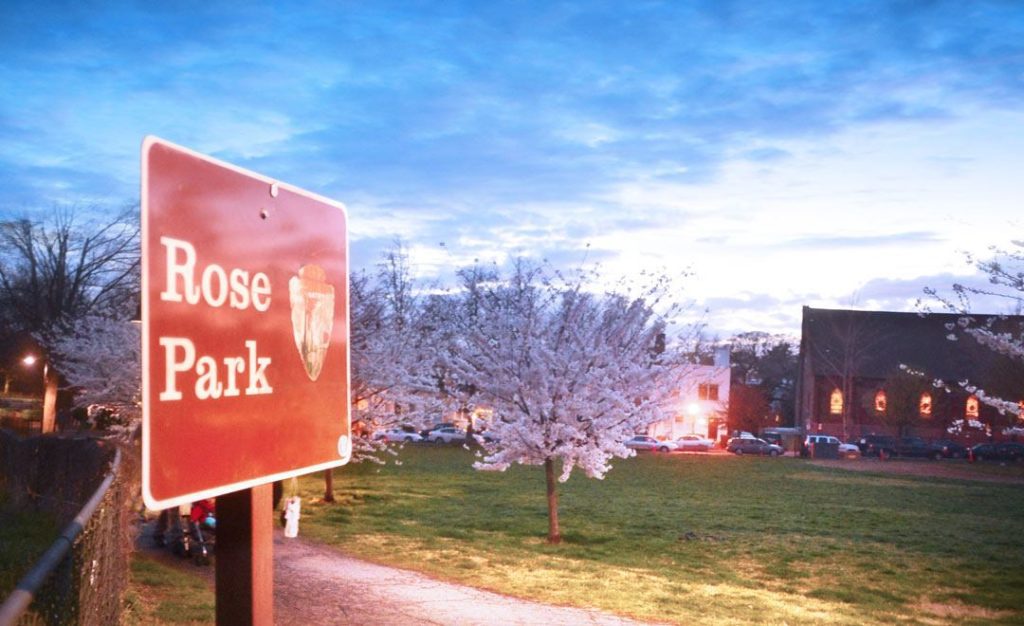
Rose Park. Courtesy Friends of Rose Park.
Dumbarton Oaks Museum and Gardens, 1921
In 1921, American diplomat Robert Bliss and his wife Mildred bought the Dumbarton Oaks mansion and acreage. For the next 15 years, Mildred and landscape architect Beatrix Ferrand – the niece of Pulitzer Prize-winning novelist Edith Wharton with whom the Blisses had become close during the war years in Paris – developed multiple garden rooms with custom gates, benches, filials and sculptures on the various terraces of the estate. The gardens made Ferrand famous. “While she didn’t use the words ‘climate change,’ the garden plans left much flexibility for new species evolving because of changing conditions,” garden superintendent Jonathan Kavalier noted. The gardens and mansion museum filled with the Bliss’s special collections of Colombian art, was given to Harvard University in 1941 while the wooded wilderness was given to the U.S. National Parks service to develop a public park. In 1944, a series of important diplomatic meetings –The Dumbarton Oaks Conversations – also led to the establishment of the United Nations in 1945.

Dumbarton Gardens. Twitter photo.
The Washington D.C. Association of Realtors (DCAR), 1922
Before becoming DCAR, the association today representing more than 2800 realtors in D.C. was once known as the Washington, D.C. Association of Realtors. They then combined with the Montgomery County Association of Realtors to form the Greater Capital Area Association of Realtors or WDCAR. The NAR is one of the only associations in D.C. to afford a state status. 100 years ago, they became the District of Columbia Association of Realtors to reflect the emphasis of the state status. “We call ourselves the voice of real estate in D.C.,” DCAR says.
Glen Echo Park Dentzel Carousel, 1922
The Glen Echo Carousel celebrated 100 years from the spring of 2021 through spring 2022. The carousel was installed in 2021 by the Dentzel Carousel Company of Germantown, Pennsylvania. The carousel is one of only 135 functioning antique carousels in the U.S. and one of a few still standing in its original location. The carousel is known as a “menagerie style,” as it has a variety of animals to ride on (including rabbits, ostriches, a giraffe and more).
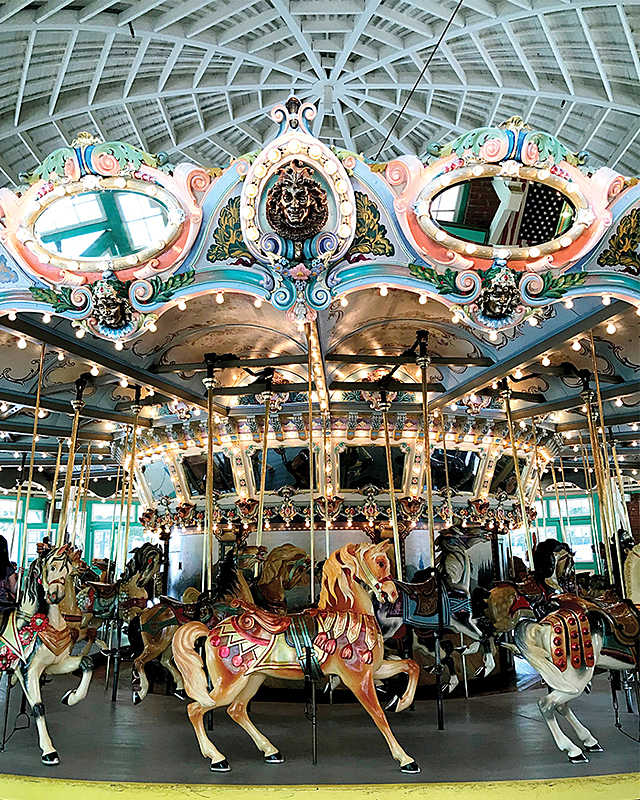
Glen Echo Carousel. Wikimedia.
The Smithsonian’s Freer Gallery of Art, 1923
The “first museum on the National Mall campus,” The Freer Gallery – now the National Museum of Asian Art — opened to the public close to 100 years ago in 1923. In addition to holding over 45,000 objects of Asian art from the Neolithic Era to the present, the Florentine Renaissance-style gallery holds a “significant group of American works of art largely dating to the late 19th century.” The gallery houses the “world’s largest collection of diverse works by James McNeill Whistler, including the famed Peacock Room.” In 1890 Charles Lang Freer paid an unannounced call to Whistler’s London studio and the two struck up a longtime friendship. Freer ultimately collected more than 1000 of Whistler’s works.

Whistler’s Peacock Room at the Freer Gallery. Wikipedia.
The Phillips Collection, 1921
The “first museum of modern art” in the United States and one of D.C.’s hidden gallery treasures, The Phillips Collection opened to the public in 1921 in the Dupont circle Georgian mansion of the Phillips family, of steel and banking renown. Surviving founder Duncan Phillips (1866-1966) – author of The Enchantment of Art, 1914 — gained a passion for modern art from his European travels, trips to N.Y.’s Metropolitan Museum of Art and D.C.’s Corcoran Gallery of Art. Creating a museum in the nation’s capital where “one could capture the art of the past and the present on equal terms,” served as one of his guiding objectives.

The Phillips Collection, opened in 1922. Wikipedia photo.

